How To Register A Small Ranch In Texas
The idea of Texas evokes images of open plains filled with cowboys and their herds alongside endless fields of crops under the sunday and clear blue heaven. That paradigm of Texas may have been bolstered by onetime Western movies and country music — in reality, Texas boasts some of the biggest cities in the country, and is the 2nd most populated state — just in some ways, the sprawling Lonely Star Land lives upward to its reputation.
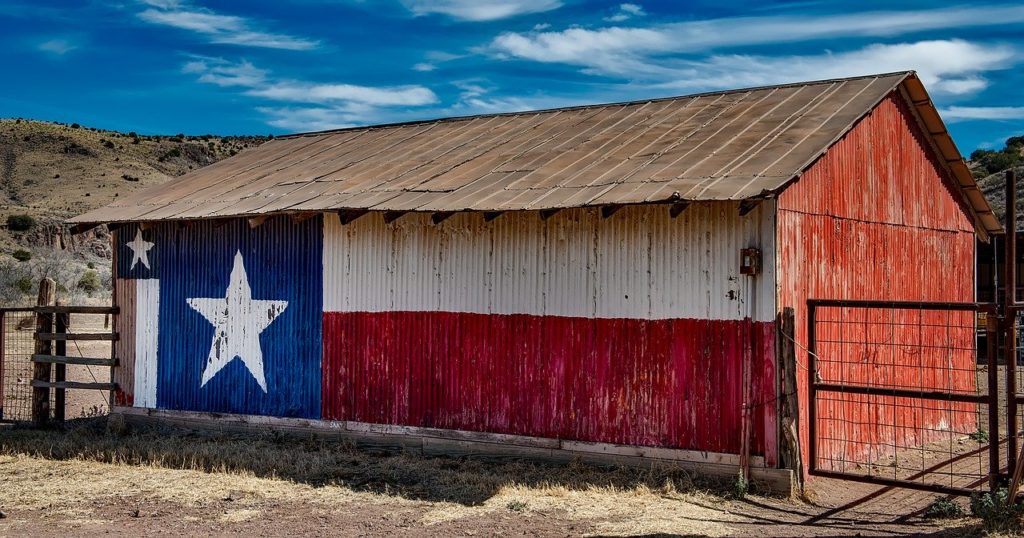
Texas leads the nation's states in full number of farms and ranches. Moreover, Texas farmers proceed the family unit tradition live, with nearly 99 percent of Texas farms and ranches being family farms, partnerships or family-held corporations.
If you think the Lone Star State might exist right for y'all, here'southward how to start homesteading in Texas.
Ownership farmland in Texas
According to 2019 information from the The states Department of Agriculture (USDA), the average cost of subcontract real estate in Texas was $2,120 per acre, more than $1,000 less than the national average of $iii,160 that same year. The boilerplate cost per acre for cropland was $ane,930 and $one,660 for pasture.
Co-ordinate to the USDA'south 2018 State Agriculture Overview, Texas has 127 meg acres of farmland and 247,000 farms. The average farm size is 514 acres.
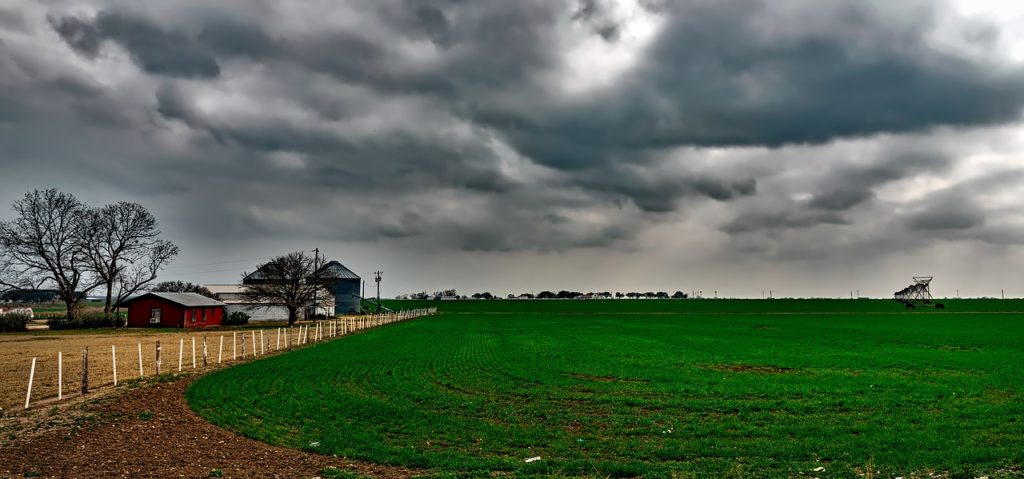
In general, sole proprietorships and partnerships need to register with the county clerk's office. If you decide to incorporate, register with the Secretarial assistant of Country'due south Office. The Economic Development and Tourism'southward Business Permit Office provides comprehensive information on land permits and licenses required for business concern enterprises in the state.
The Texas Department of Agriculture (TDA) administers the Young Farmer Grant program to provide financial aid in the grade of dollar-for-dollar matching grant funds to immature agricultural producers that are engaged or volition exist engaged in creating or expanding an agronomical business concern in Texas.
Grant applications will exist accepted from any individual person 18 years or older, merely younger than 46 years of age every bit of the application borderline, who is engaged or will be engaged in creating or expanding agriculture in Texas. Bidder must exist The states citizens and reside and operate in Texas.
The TDA as well administers the Young Farmer Interest Rate Reduction Plan, which is intended to facilitate a lower interest rate to agronomical producers or agribusiness owners who are between 18 and 46 years of age through a commercial lender for an eligible projection. The Comptroller of Public Accounts for the Land of Texas deposits funds in a banking concern (which must be a country canonical depository) at a below market involvement rate.
Growing crops in Texas
Texas boasts diverse topography and climate, which allows the land to support numerous crops and products. Plains, coastlines, mountains and basins make upwards the landscape, and the state is and then vast that it contains approximately 1,100 dissimilar types of soil.
Cotton is Texas'due south most valuable crop, generating nine per centum of the country'due south full agricultural receipts and 29 percent of the nation'south cotton wool revenues. Other major field crops in Texas are corn for grain, hay, wheat, sorghum, peanuts, rice and sugarcane.
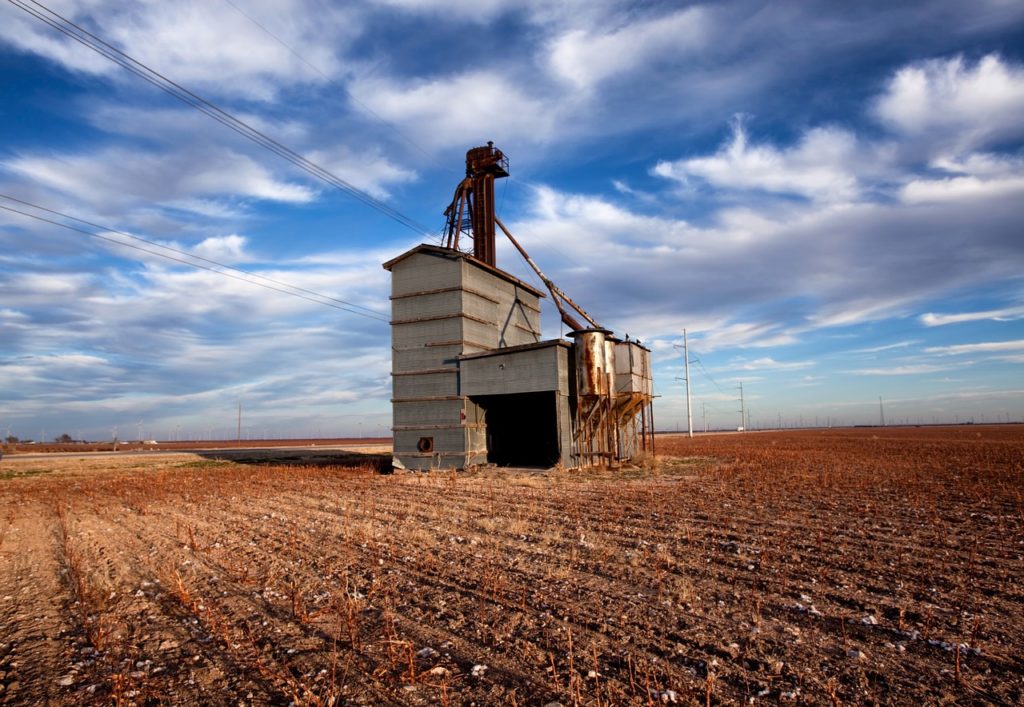
The leading fruits produced in Texas are watermelons, grapefruits (which is the official state fruit) and cantaloupes. Important Texas vegetables include onions, potatoes, and cabbage (Texas is the leading producer of cabbage in the nation). Texas is also a leading producer of pecans. Mushrooms are likewise grown commercially in the state.
The USDA hardiness zones in Texas range from 6b to 10a. The coolest zone, 6b, is located in the northern office of the land. The rest of Texas enjoys a warm climate year circular, including the winter months, in zones 7a, 7b, 8a, 8b and 9a. Winter lows in Texas may drib every bit low equally -5 degrees Fahrenheit or equally high equally 20 degrees Fahrenheit, depending on location.
Texas's Sunset growing zones — which are more commonly used in the West as they consider factors like pinnacle and maximum temperatures in the region — include zone 10, the high desert with chilly weather and some rain that stretches along the Western one-half of the state; zone 28, the boiling Gulf Coast with hot summers and plentiful rainfall; zone 29, the interior plains of South Texas, featuring hot summers and moderate rainfall; zone 30, Hill Country of Central Texas, which favors perennial and fruit crops; zone 31, the Interior Plains of Gulf Coast and Coastal Southeast, where sticky summers dissimilarity dank winters; zone 33 in North-Fundamental Texas, where warm Gulf Coast air and colder continental and Chill fronts converge unpredictably; and zone 35, the rainy Ouachita Mountains.
Spring and summertime crops that abound well in Texas include tomatoes, peppers, squash, zucchini, cucumbers, corn, okra, beans, peas, cantaloupe and watermelon. Belatedly summer begins the second growing flavor for these plants also equally broccoli, Brussel sprouts, cabbage, carrots, cauliflower, greens, Irish potatoes and turnips. Winter gardening in Texas is conducive to growing onions, beets, radishes, lettuce and asparagus, too every bit a 2d round for fall vegetables.
Texas soils vary from deep blow sands to fertile, well-tuckered soils to heavy, dark clays underlain past layers of caliche rock. Crops grown on sandy soils unremarkably respond to liberal amounts of potassium, whereas crops grown on dirt soils do not.
The Houston Black series is the official soil of Texas, occurring on nigh 1.v million acres in the Blackland Prairie, which extends from north of Dallas south to San Antonio. Considering of their highly expansive clays, Houston Black soils are recognized throughout the earth every bit the archetype Vertisols, which shrink and dandy markedly with changes in moisture content. These soils formed nether prairie vegetation and in calcareous clays and marls. H2o enters the soils rapidly when they are dry out and cracked and very slowly when they are moist. Houston Black soils are used extensively for grain sorghum, cotton, corn, small grain, and fodder grasses. They besides occur in several metropolitan areas, where their very loftier shrink-swell potential commonly is a limitation affecting edifice site development.
The all-time agricultural soil in Texas, all the same, is mollisols, which make up a large office of the country in the Texas plains. Mollisols are a deep chocolate-brown color. This is due to the fresh organic matter being added every twelvemonth and sticking to the top. The soil is rich in calcium and magnesium, calculation to the rich minerals constitute in the soil.
Many areas of Texas, peculiarly those with hot summers and sand soils, demand more frequent watering than other areas in the country. A baste irrigation arrangement is recommended.
Raising animals in Texas
The largest source of agricultural revenue in Texas comes from the sale of beefiness cattle. Texas produces about twenty per centum of the nation'south beef cattle and ranks tiptop among the states in the value of cattle raised. Other important livestock products include broilers chickens and dairy, followed by chicken eggs and hogs. Sheep and lambs and turkeys are also commercially raised in Texas. Texas raises more sheep and produces more mohair from angora goats than whatsoever other country.
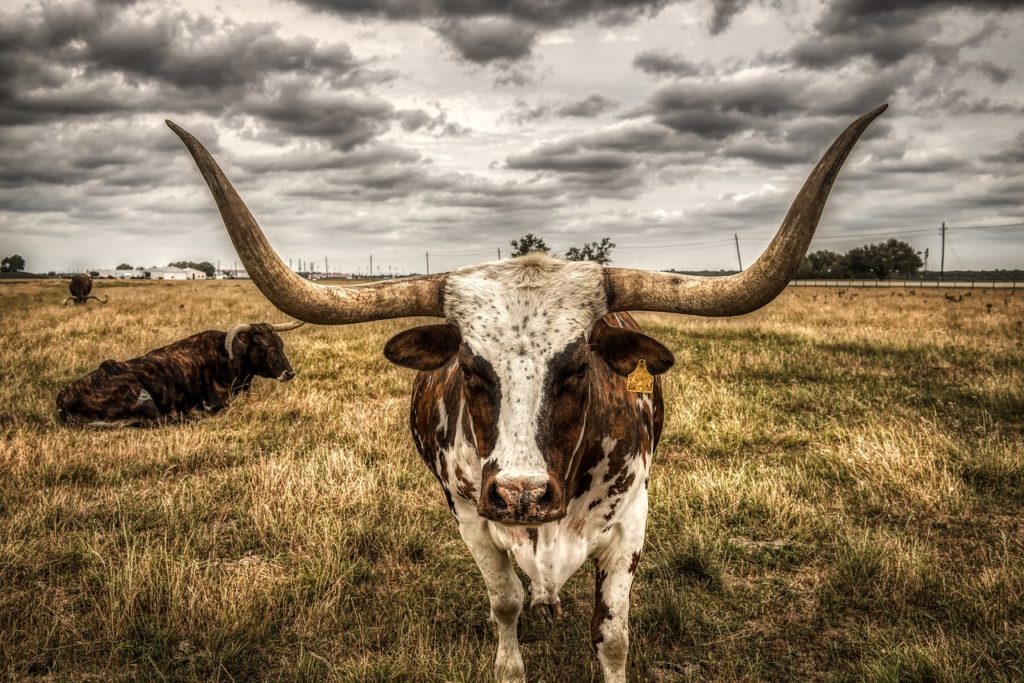
Texas is an "open range" or a "fence out" state, pregnant that a livestock owner does not have a legal duty to prevent animals from getting onto the roadway. Nonetheless, many stock laws were enacted across Texas during the 1930s which more often than not land that certain species of animals may not be permitted to run at large within the limits of the detail county.
According to Texas Contend Police, each gardener or farmer shall make a sufficient argue around cleared land in cultivation that is at least five feet high and will preclude hogs from passing through, unless a local government has adopted their own specifications for fences.
The freeholders (essentially, county commissioners) of a county or an area within a county may petition commissioners court to deport an election for the purpose of determining if cattle are to be permitted to run at large in the county or surface area. Any such petition must clearly state each class of animal that the petitioners seek to prohibit from running at large; and draw the boundaries of the area in which the election is to be held, if the ballot is to be less than countywide.
The Texas Animate being Health Commission specifically regulates the entry of many livestock, poultry and exotic livestock species (which in Texas include llamas and alpacas) into the state and into interstate shows and exhibitions. Any livestock or poultry that are infected, exposed or quarantined in any way for an infectious, contagious or communicable disease may not enter the state of Texas.
Most livestock requires a Certificate of Veterinarian Inspection to enter Texas, though there are some specifications for different types of livestock. For example, no horse, cow, grunter, goat or sheep may enter Texas from a premise or surface area under quarantine for vesicular stomatitis, while poultry requires Avian Influenza-negative exam results within 72 hours of entry. Other health requirements for specific livestock can be found on the Texas Beast Health Commission website.
According to the Texas Agronomical Lawmaking, cattle, hogs, sheep, or goats must be identified with brands, tattoos, and/or electronic devices, differing from those of their neighbors. A person who owns a horse may have and use a heat brand, freeze brand, acid brand, hoof make, earmark, tattoo, electronic device or some other by and large accepted identification method.
There are a number of livestock auctions that have identify regularly throughout the state of Texas. A total listing of livestock auctions in Texas can be found on the Texas Department of Agronomics website.
Selling food in Texas
At that place are 174 farmers' markets listed on the Texas Farmers Market Directory website
A temporary nutrient institution allow is non required to sell whole, intact unprocessed fruits and vegetables and pre-packaged, non-potentially hazardous food. A temporary food establishment permit is required to sell all other potentially hazardous food.
A cottage nutrient production operation is defined as an individual, operating out of the individual's home, who produces non-potentially hazardous foods; has an annual gross income of $50,000 or less from the sale of the described foods; and sells the foods produced straight to consumers at the individual's dwelling, a farmers' market, a subcontract stand, or a municipal, county, or nonprofit fair, festival or event, or another location determined past the consumer.
A cottage food product functioning is exempt from the requirements of a nutrient service establishment and does not have to comply with the Texas Nutrient Establishment Rules. Health departments practice not have the regulatory say-so to conduct inspections of a cottage nutrient production operation. Yet, local wellness departments take the authorisation to human action to forbid an immediate and serious threat to human life or wellness through emergency lodge, call up orders and delegation of powers or duties. Health departments are required to maintain records of all complaints against a cottage food production operation. Food produced past a cottage food product operation may not exist sold via the Internet, by mail guild or at wholesale.
An individual who operates a cottage food production operation must successfully complete a bones food safe educational activity or training plan for food handlers.
A cottage nutrient production operation may not sell to customers potentially hazardous foods. A potentially hazardous food is a food that requires time and temperature control for prophylactic to limit pathogen growth or toxin product. Not-potentially hazardous foods in Texas include baked appurtenances, candies; coated and uncoated basics; unroasted nut butters; fruit butters; canned jams or jellies; fruit pies; dehydrated fruit or vegetables, including dried beans; popcorn and popcorn snacks; cereals, including granola; vinegar; pickles; mustard; roasted coffee or dry tea; and dried herbs.
Foods sold by a cottage nutrient production operation must be packaged and labeled. The nutrient must be packaged in a manner that prevents product contamination, except for foods that are too large and or bulky for conventional packaging. The labeling information for foods that are not packaged must be provided to the consumer on an invoice or receipt.
The label must be legible and include the name and address of the cottage food production performance; the mutual proper name of the production; a listing of major allergens used, such equally eggs, basics, soy, peanuts, milk or wheat; and this statement: "This nutrient is fabricated in a home kitchen and is not inspected by the Department of State Health Services or a local health section."
Selling farm eggs at a farmers market in Texas requires a temporary food establishment license. Eggs must be maintained at an ambient air temperature of 45 degrees Fahrenheit and below. Eggs must be properly labeled equally "ungraded" with rubber handling instructions.
A container in which eggs for human consumption are offered for retail or wholesale must be legibly labeled with a statement showing the size and course of the eggs in the container; the address, including the city and state, and the license number of the person who graded and sized the eggs; the address at which the eggs were sized and graded, or a department-approved lawmaking.
Eggs offered for sale that are not in a carton must exist in a container that contains all the data required on a label in a higher place in legible letters at least one inch loftier on a sign fastened to the container. This does not apply to a retailer'due south sale of ungraded eggs if the eggs are clearly labeled every bit being ungraded and the retailer sells less than 120 dozen eggs a week.
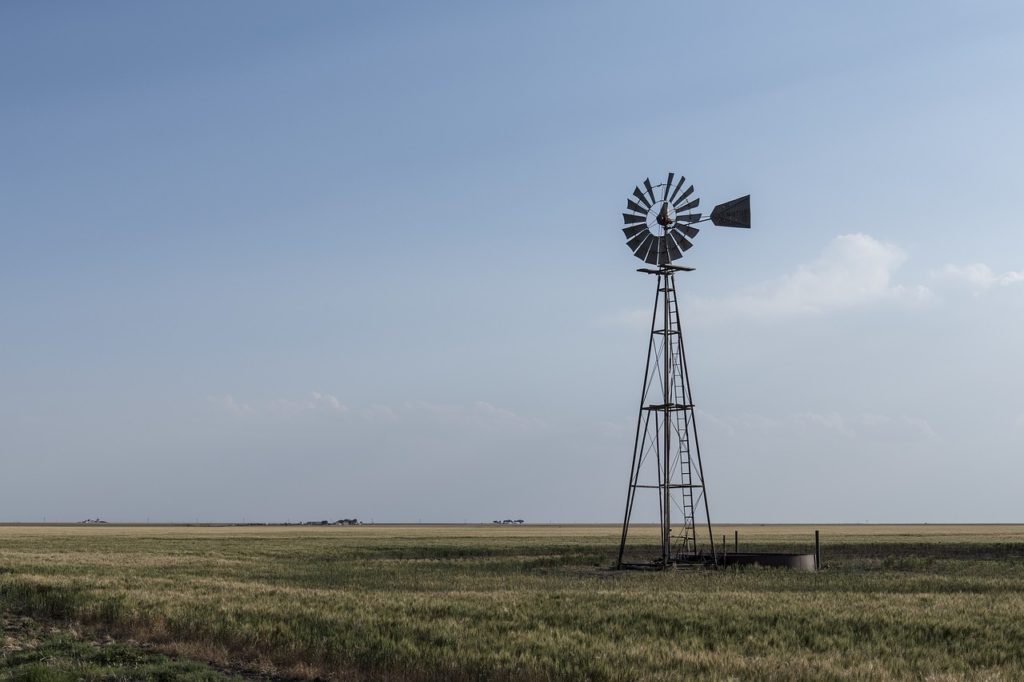
Texas organizations for new farmers
- Farm & Ranch Freedom Alliance
- Texas Young Farmers
- Sustainable Food Center
- Texas Organic Farmers & Gardeners Clan
- Key Texas Young Farmers Coalition
- Texas Land Conservation Assistance Network
- Texas Farm Bureau
- Texas Agriculture Council
- Texas A&Thou AgriLife Extension
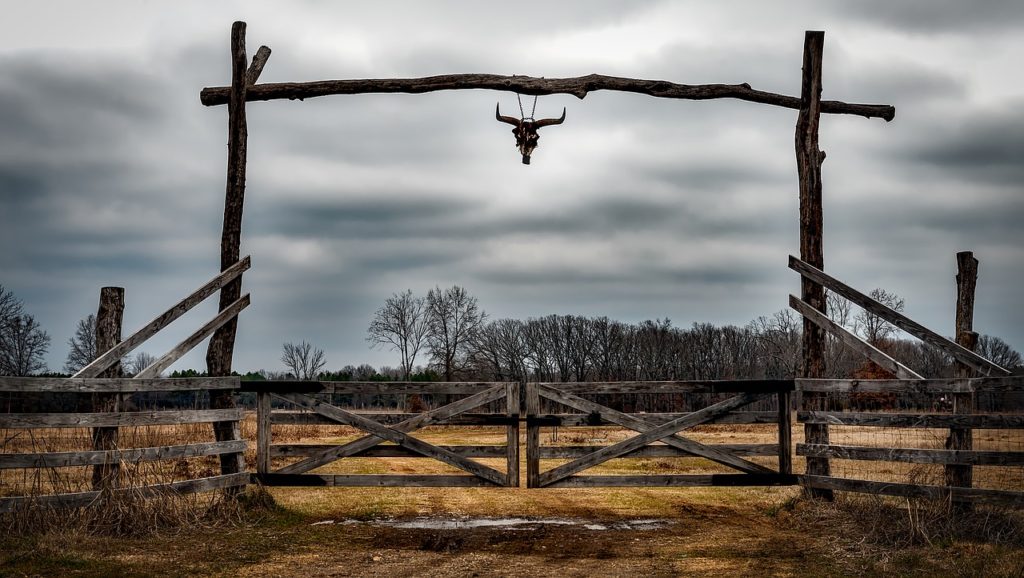
How difficult is it to start homesteading in Texas?
Texas is a great place to offset a farm or homestead. The Lonely Star Land has cheap, plentiful land and is a hotbed for the nation'southward crop and animal agronomics.
Source: https://hellohomestead.com/how-to-start-homesteading-in-texas/
Posted by: burgerhurp1999.blogspot.com


0 Response to "How To Register A Small Ranch In Texas"
Post a Comment